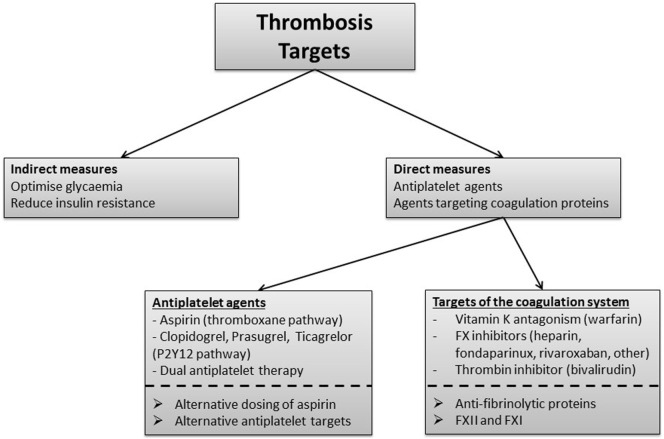Figure 5.
Thrombotic pathways that represent current and potential therapeutic targets in diabetes. Indirect measures to improve the thrombotic environment in diabetes focus on optimizing glycemic control by lowering glucose levels while avoiding hypoglycemia and also by reducing insulin resistance. Antiplatelets and agents that target the coagulation system comprise the main direct measures to manage the thrombotic environment in diabetes. Aspirin targets the thromboxane pathway and is also used in combination with clopidogrel, prasugrel, or ticagrelor which target the P2Y12 pathway. Alternative antiplatelet targets are under consideration. Vitamin K antagonism reduces thrombosis risk but is associated with high risk of bleeding when combined with antiplatelet therapy, and therefore, not routinely used for atherothrombotic disease. Inhibitors of coagulation proteins FX and thrombin, such as heparin and direct oral anticoagulants, represent agents with promise in diabetes while targeting factor (F)XII and FXI requires careful future evaluation. Alternative dosing of aspirin and reduction of incorporation of antifibrinolytic proteins into the clot may represent new approaches to improve clinical outcome in patients with diabetes.

